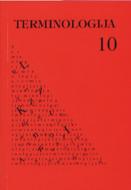Individualieji L. Ivinskio Lenkų-žemaičių kalbų žodyno ir Prigimtūmenės augalų vardai
Individual names of plants in Ivinskis' Lenkų-žemaičių kalbų žodynas and Prigimtūmenė
Author(s): Albina AuksoriūtėSubject(s): Language and Literature Studies
Published by: Lietuvių Kalbos Institutas
Keywords: Polish-Samogitian Dictionary; manuscript; word-formation; Prigimtūmenė (Nature); equivalent; suffix derivate; way of formation; naming; plant; classification; taxonomy; category
Summary/Abstract: This article deals with the names of plants of individual word-formation presented in two manuscripts – Lenkų–žemaičių kalbų žodynas (Polish-Samogitian Dictionary) (about 1863) and a scientific work Prigimtūmenė (Nature) (1870). About 80 individual names included into both manuscripts are compared. Similarity of Lithuanian names given in both manuscripts is shown by Latin equivalents. All Ivinskis’ terms of individual word-formation which have been compared can be distributed into two groups: 1) the same names used to name the same plants in both the dictionary and Prigimtūmenė, 2) different plant names – i. e. in the dictionary and Prigimtūmenė the same plant is named differently. Names of the first group make about 54 % of the compared names. In respect of word-formation names are quite different, most of them are suffix derivates and the way of formation of about one quarter of them is not clear, because the underlying word is not known. Comparison of different names for naming the same plant in the dictionary and in Prigimtūmenė shows that those names are entirely different. Word-formation of most of them is not clear and these, which have a clear word-formation pattern, have a different underlying word and a different formant. It is difficult to say why Ivinskis gave different names in the two manuscripts to almost a half of plants. Prigimtūmenė was written later than the dictionary. In Prigimtūmenė he classified plants according to taxonomy categories, so it is possible that he had changed his opinion when trying to co-ordinate names of these categories or to improve and to make plant names more accurate.
Journal: Terminologija
- Issue Year: 2003
- Issue No: 10
- Page Range: 135-142
- Page Count: 8
- Language: Lithuanian

